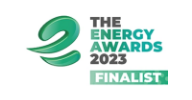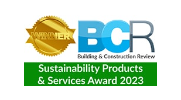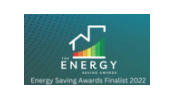Chilled water is a key element for maintaining comfortable temperatures in commercial buildings, and is typically deemed crucial for occupant well-being, productivity, and even equipment functionality. While various cooling systems exist, chilled water tanks play a vital role in ensuring efficient and reliable cooling, particularly in large buildings. In this article Adveco explores the applications of chilled water tanks in conjunction with chillers, fan coils, and heat pumps, highlighting their benefits and considerations.
These systems work by circulating chilled water through a closed loop connected to heat exchangers that transfer coolness to the building’s air. Central to this system is the chilled water tank, acting as a thermal reservoir that stores pre-cooled water generated by a chiller. This stored water allows the chiller to operate less frequently, reducing energy consumption and wear and tear.
Chilled water tanks offer versatility and can be integrated into various cooling systems. The most common applications are based around chiller plants, fan coil units (FCUs) or air source heat pumps (ASHPs). When used in combination with traditional chillers, tanks create a buffer, allowing the chiller to operate in longer cycles even during peak demand periods. This reduces energy costs and extends chiller lifespan. In buildings with FCUs, the chilled water tank provides the cool water circulated through the FCUs’ heat exchangers, cooling the air in individual rooms or zones. Chilled water tanks can also be integrated with reversible ASHPs. During cooling periods, they store chilled water; during heating seasons, they could be used as thermal buffers for hot water generated by the heat pump, although designated tanks for heating and cooling are recommended for commercial-scale applications
Deploying the tanks delivers several advantages. Critically storing chilled water reduces energy consumption since the tanks allow chillers to operate less frequently, minimising energy use and associated costs. Tanks can also store cool water during off-peak hours. By enabling peak demand shaving reliance on the grid during peak periods when electricity prices are often higher is reduced. The buffer effect of tanks also optimises chiller operation for improved system efficiency, reducing wear and tear and extending its lifespan.
Employing the tanks also ensures a consistent supply of chilled water, this helps prevent temperature fluctuations creating more comfortable conditions for a building’s occupants.
Chiller water tanks can also be combined with solar thermal systems to sustainably generate a portion of the cooling needs. While this may sound counterintuitive, the heat captured from solar thermal collectors can be deployed in an absorption chiller where the captured heat boils a refrigerant, creating vapor. This vapor expands and cools, producing chilled water. Compared to traditional electric chillers, solar thermal systems can save significant energy, reducing reliance on the grid and lowering electricity bills, not only during the summer months but also contributing pre-cooling in shoulder seasons.
Integrating a tank seamlessly into existing or new cooling systems requires careful planning and expertise and, depending on capacity needs, space needs to be dedicated for installation. At Adveco we can support the planning phase with system design and advice. The latest chilled water tanks from the Adveco, the CWS range offers 10 models from 300 litre to 5000 litre capacity with high-capacity connections providing greater versatility to cater for a wide range of system applications with moderate to high flow rates. These tappings enable the tanks to be used with multiple cooling sources including chillers, heat pumps and FCUs. Adveco also provides manufacturer-grade warranty service since regular maintenance of the tank and its components is crucial for optimal performance and longevity.
Whether a chilled water tank is the right fit for your commercial building depends on several factors including size, cooling demand, budget and sustainability goals. Larger buildings with high cooling needs benefit most from the efficiency gains offered by chilled water tanks and with multiple connection options compatibility is maximised enabling the tanks to be integrated with various systems. While the initial investment might be higher for premium models, long-term cost savings need to be considered, both in terms of potential energy savings and reduced operational costs over time. This and the capability to facilitate the use of renewable energy sources for cooling also helps to contribute towards sustainability objectives and achieve strategic goals as part of a building-wide net zero initiative.
Chilled water tanks play a critical role in optimising cooling systems for commercial buildings, offering numerous benefits from energy savings and improved comfort to flexibility and potential integration with renewables. However, careful consideration of investment costs, space requirements, and system compatibility is essential. By thoughtfully evaluating your needs and seeking professional guidance, you can determine if chilled water tanks can be the key to unlocking a more efficient, sustainable, and comfortable cooling solution for your commercial space.













